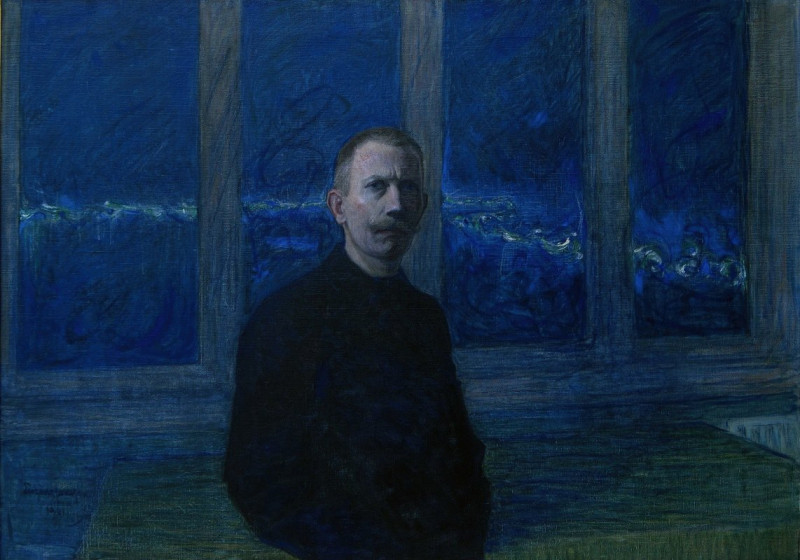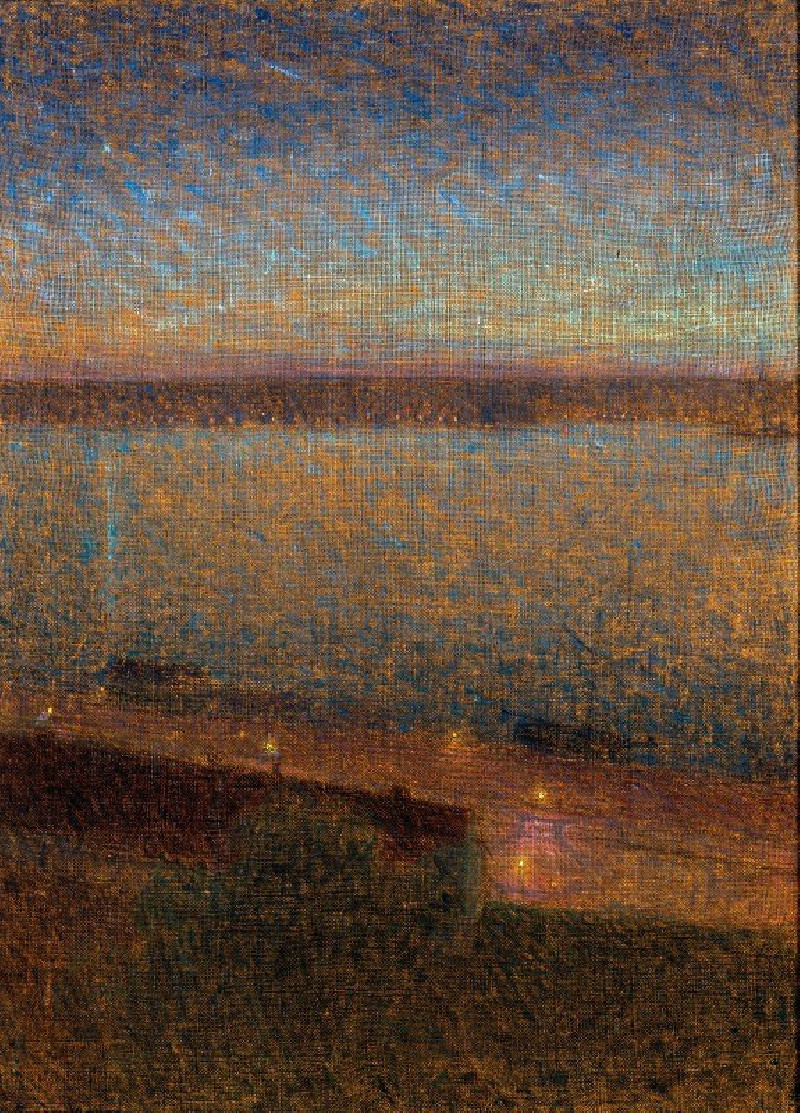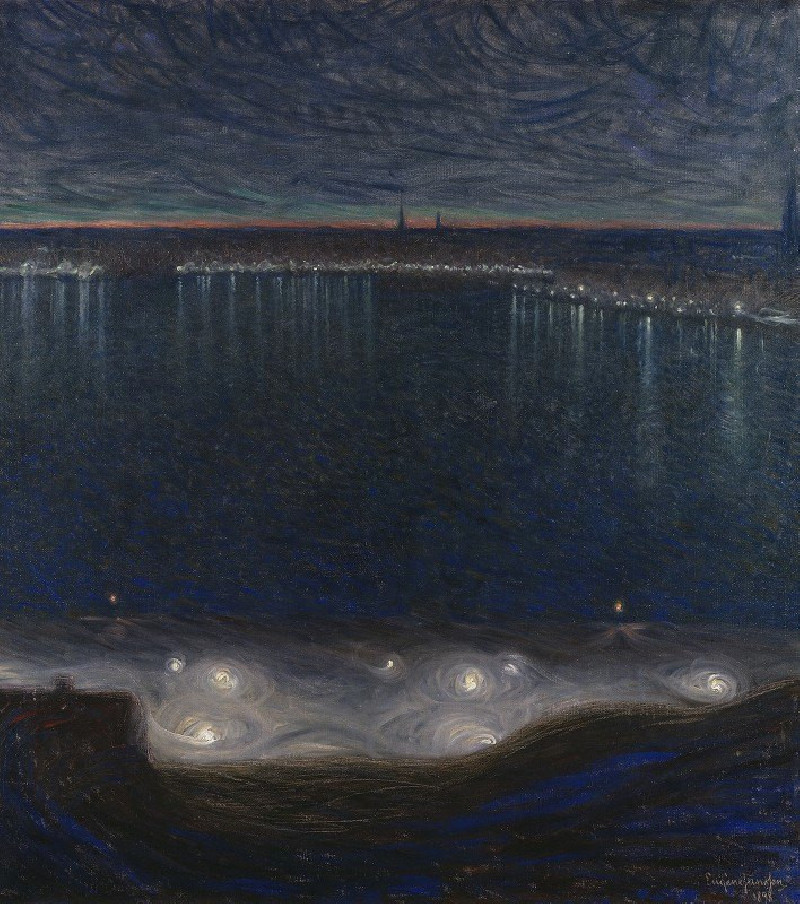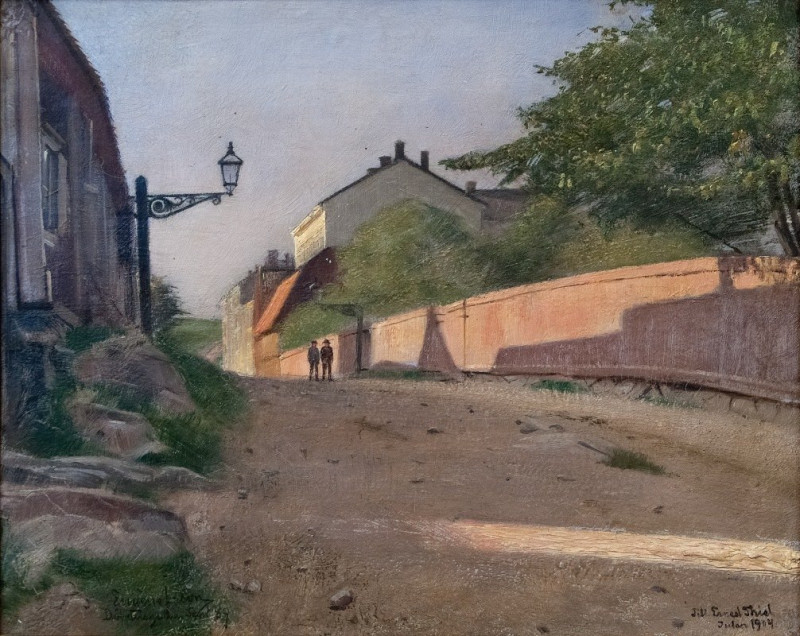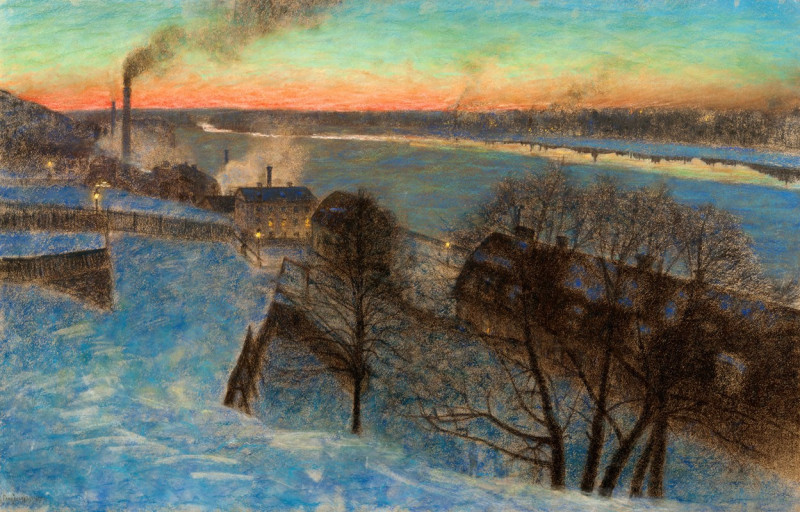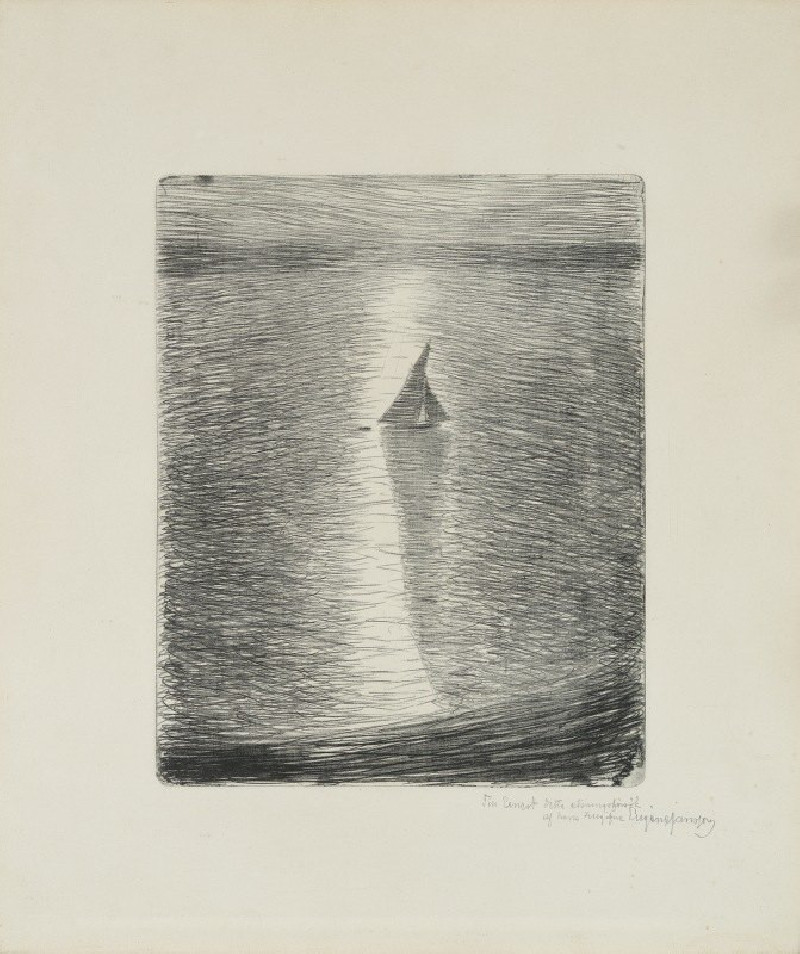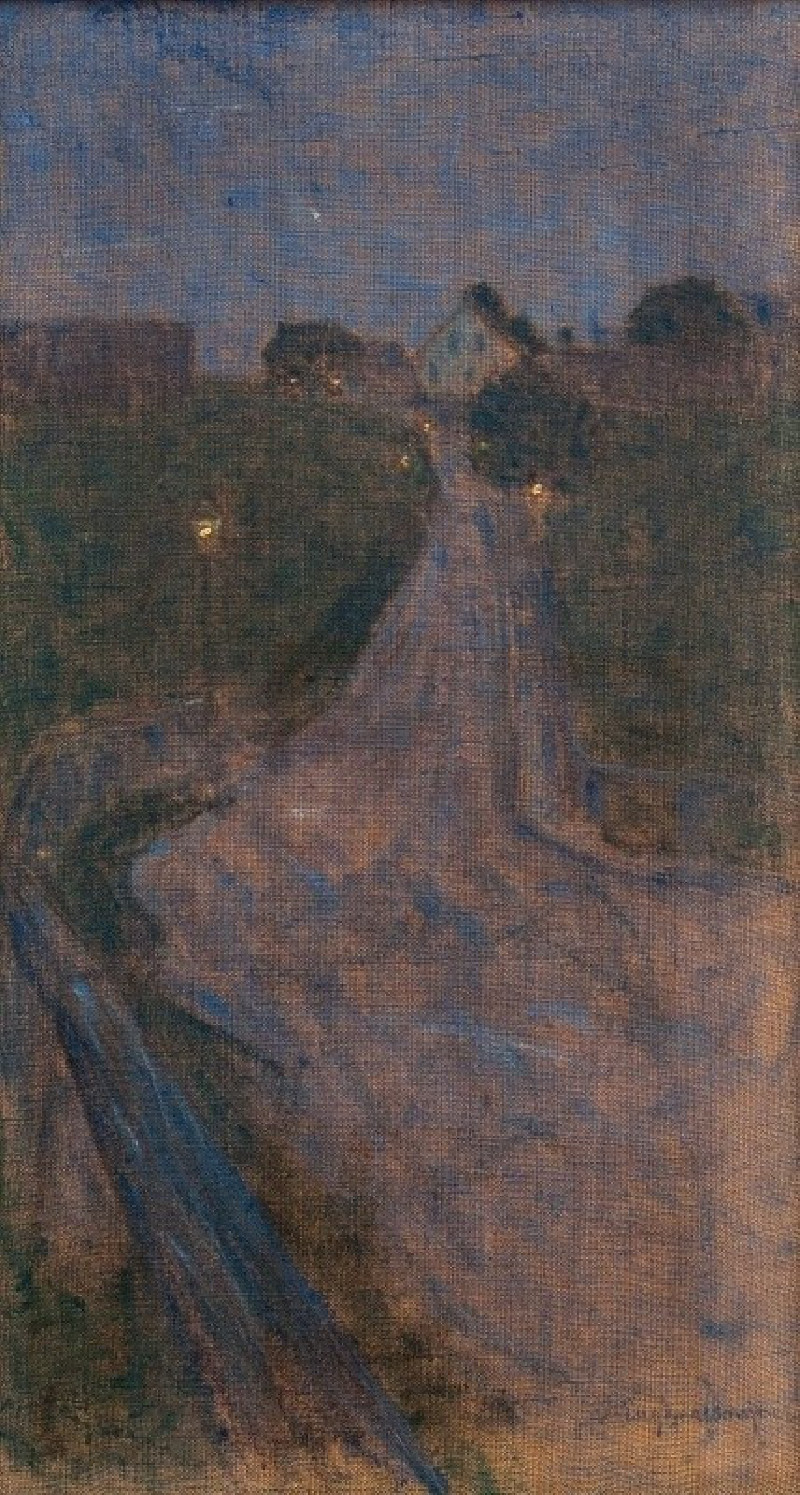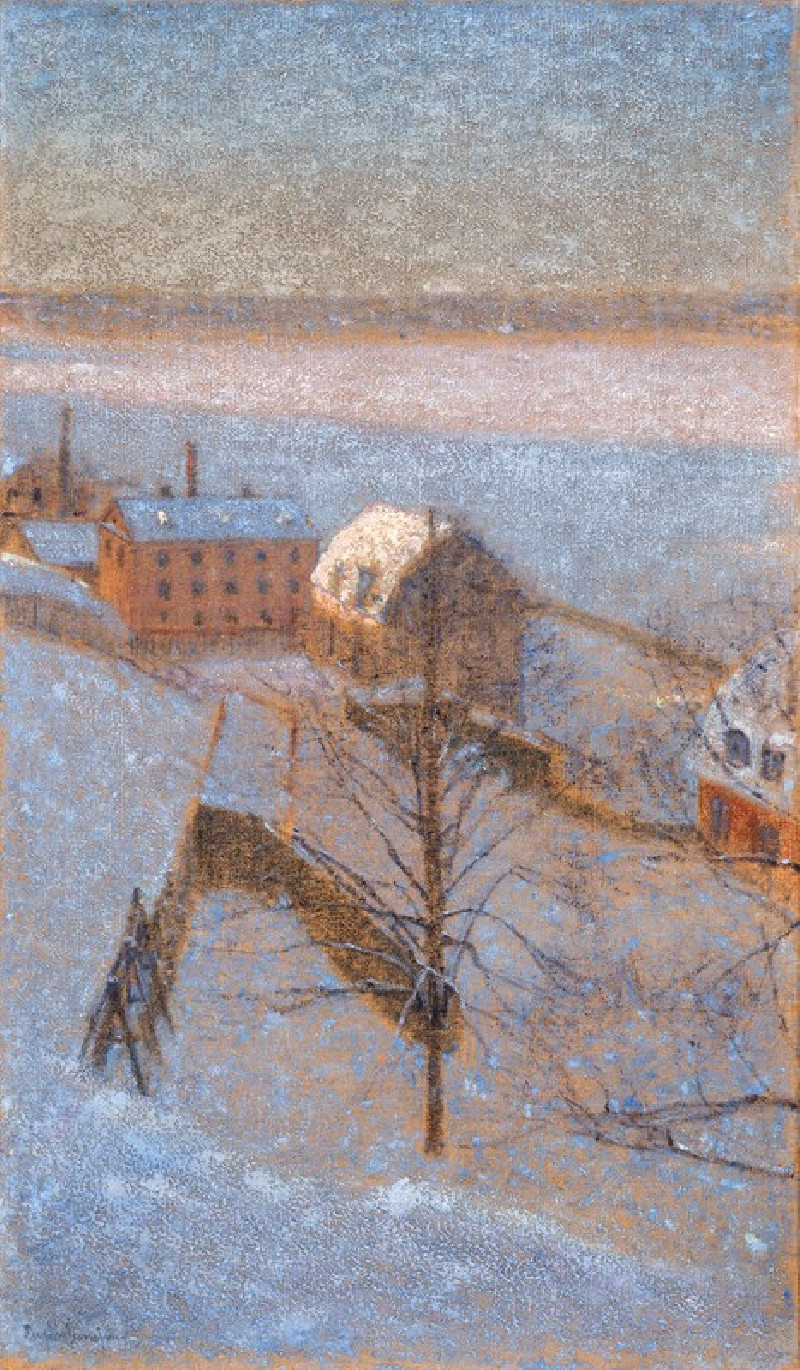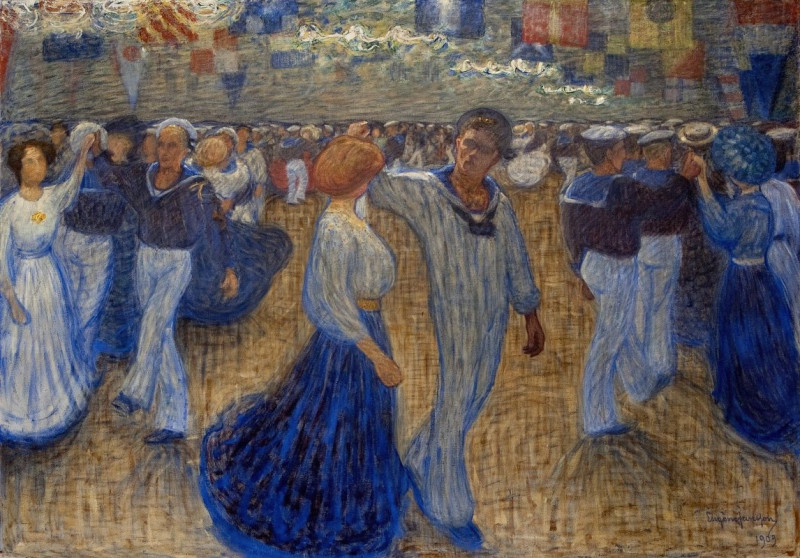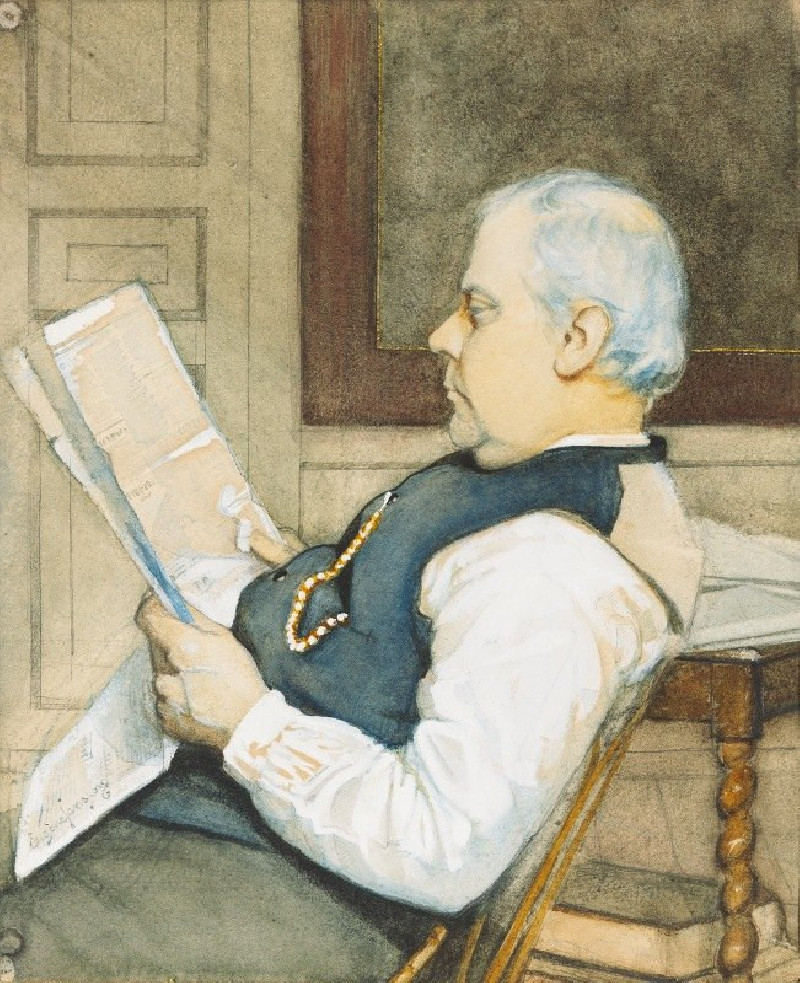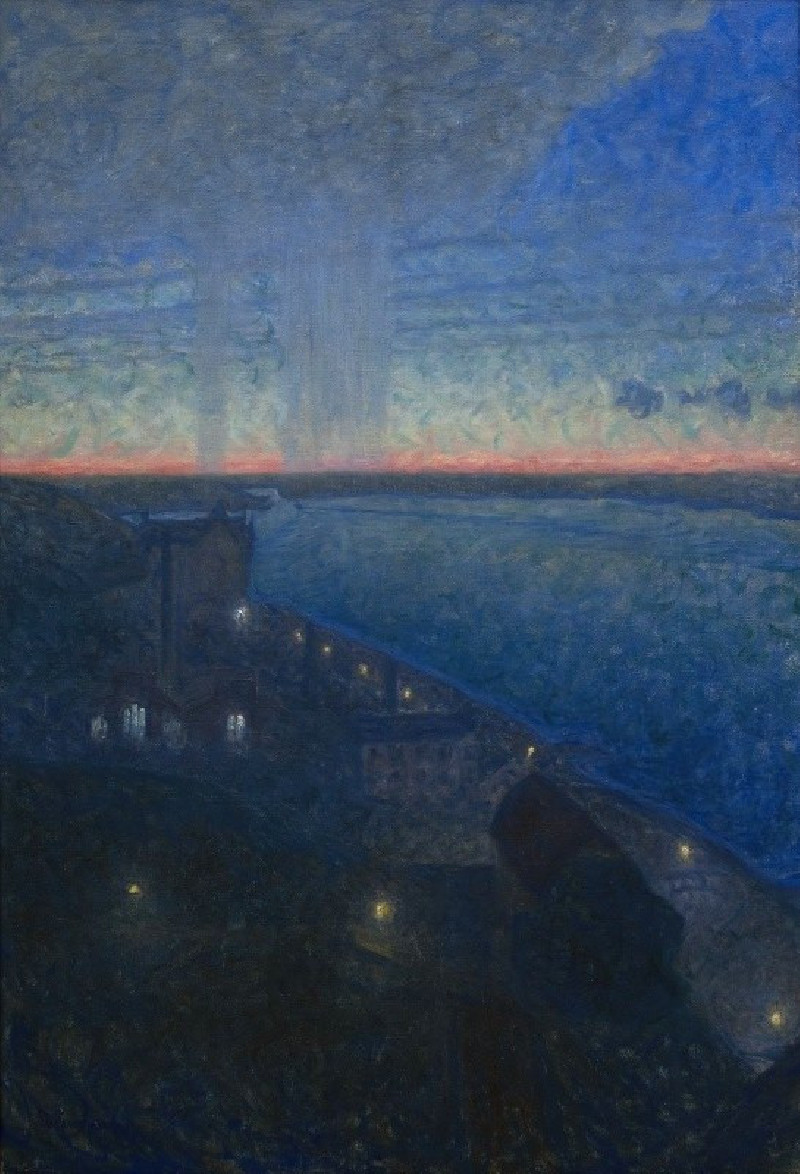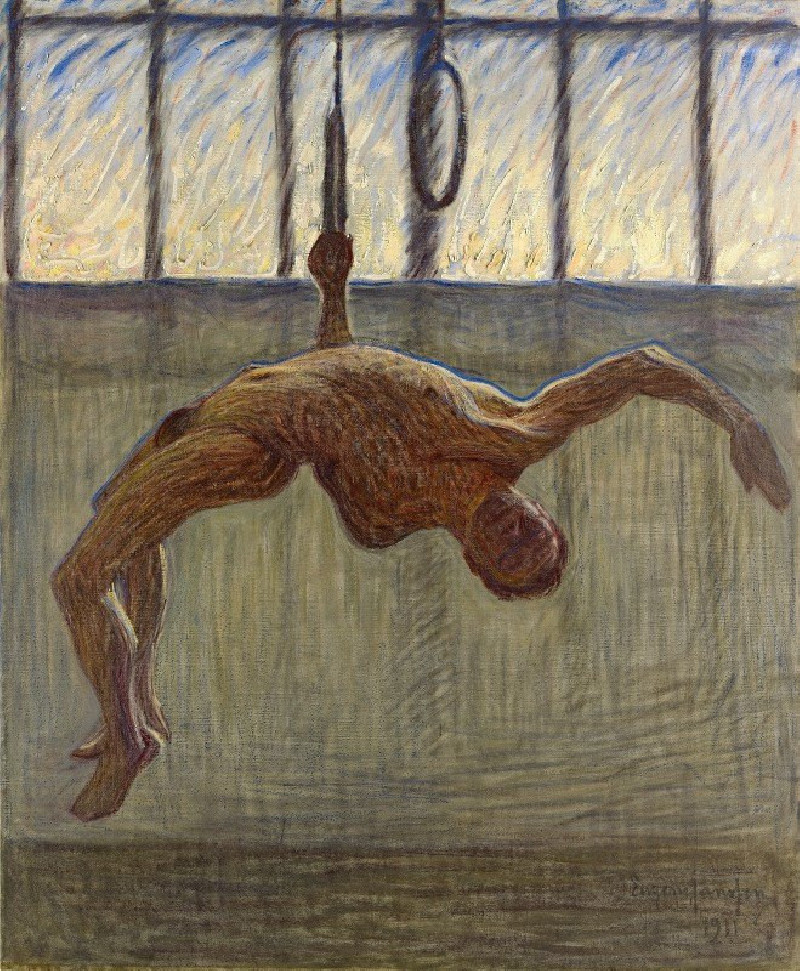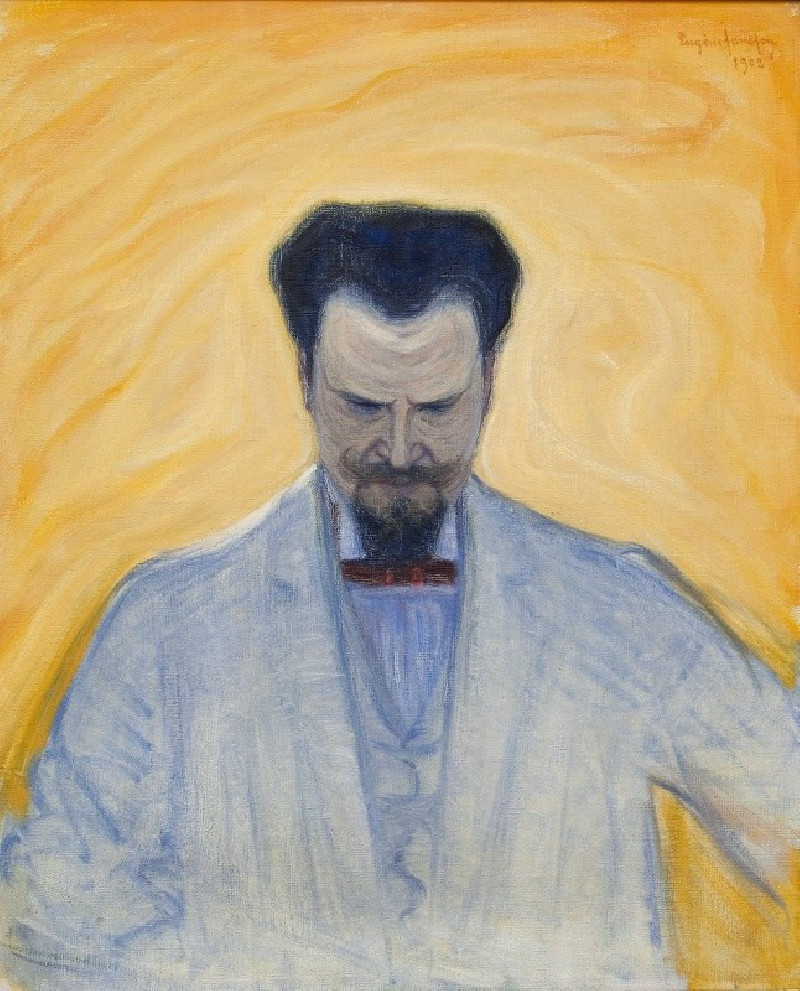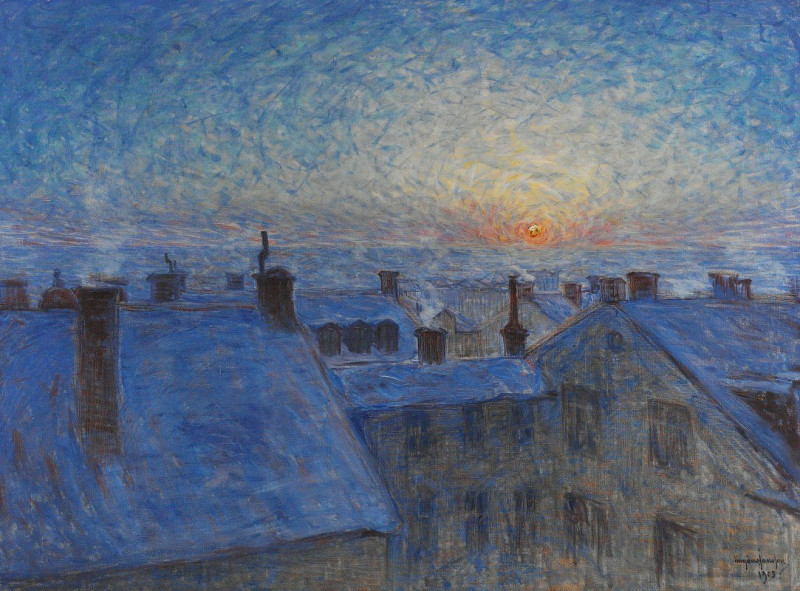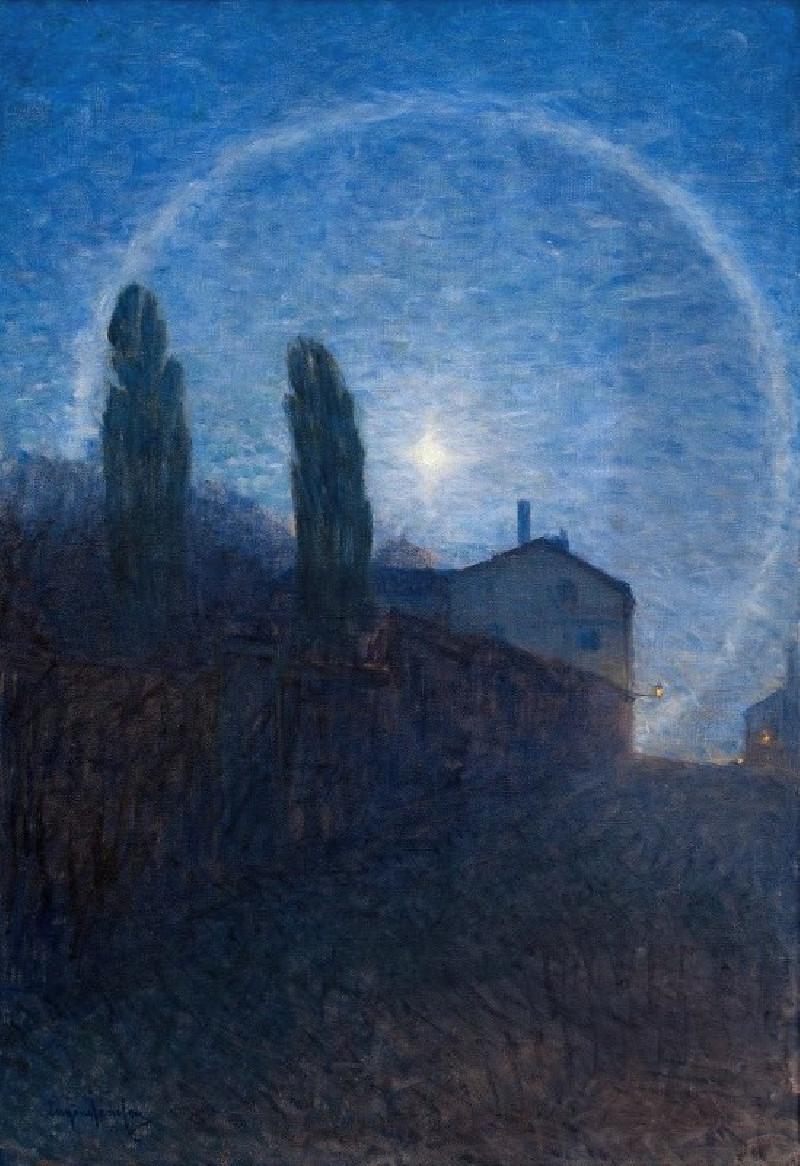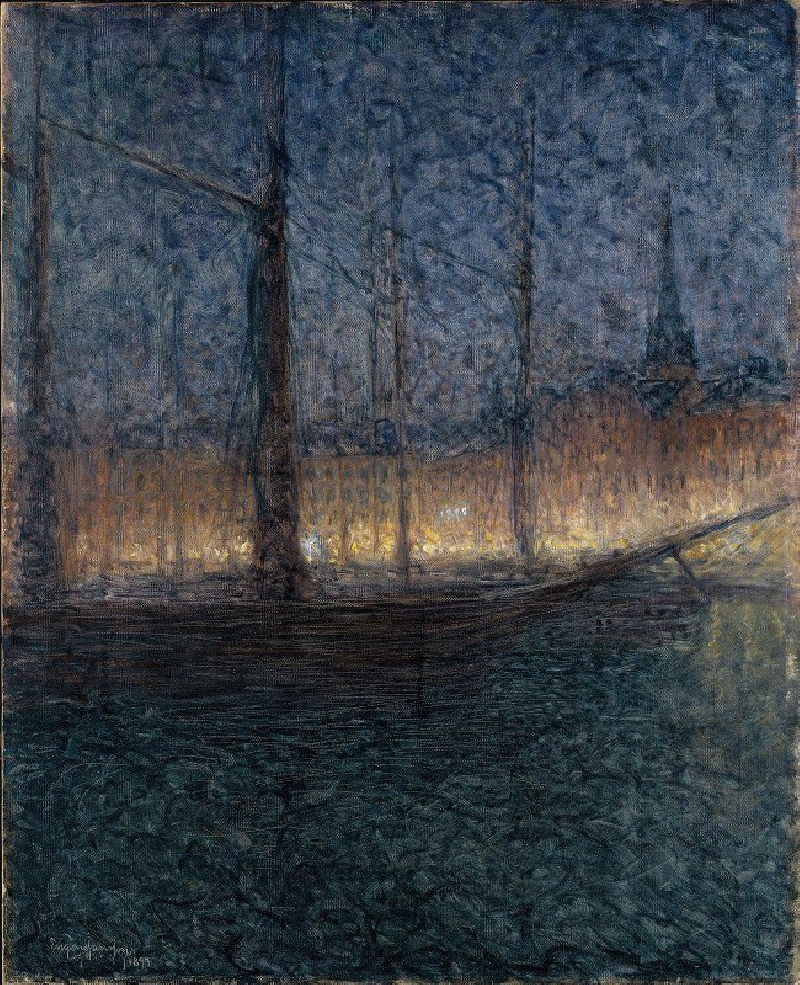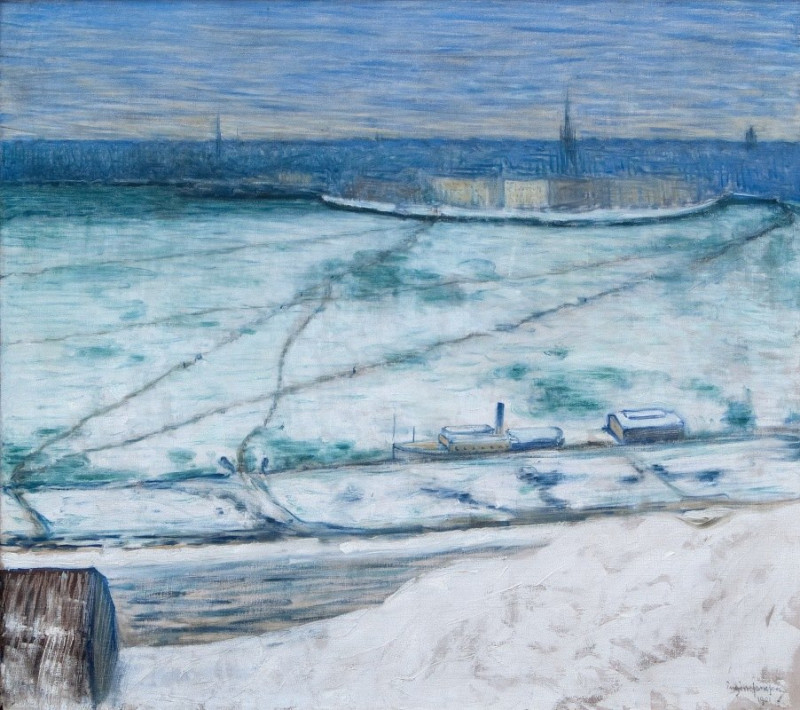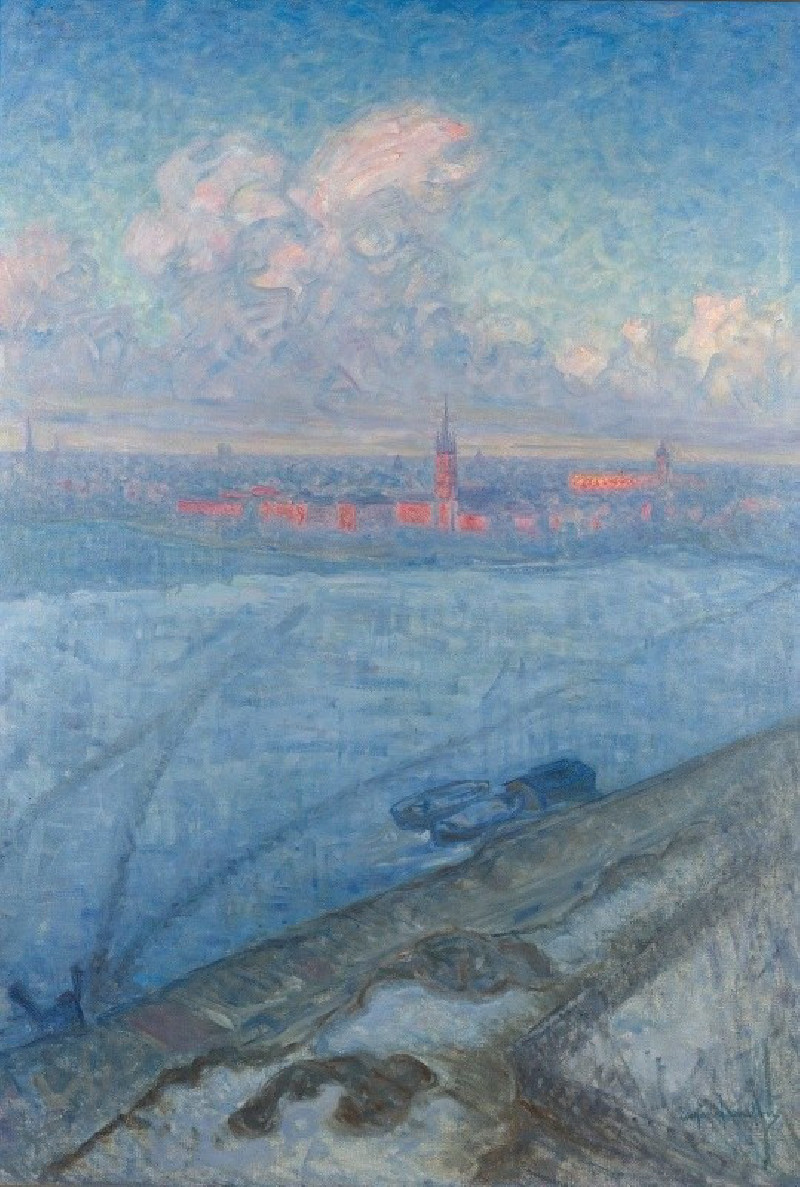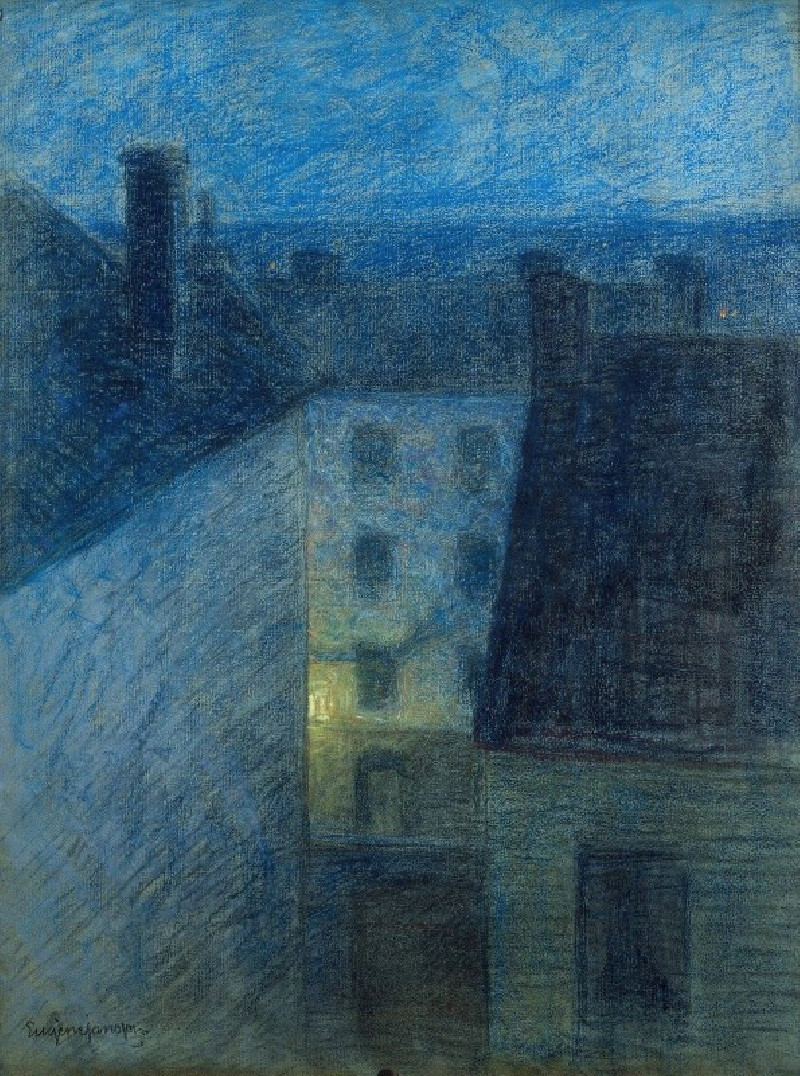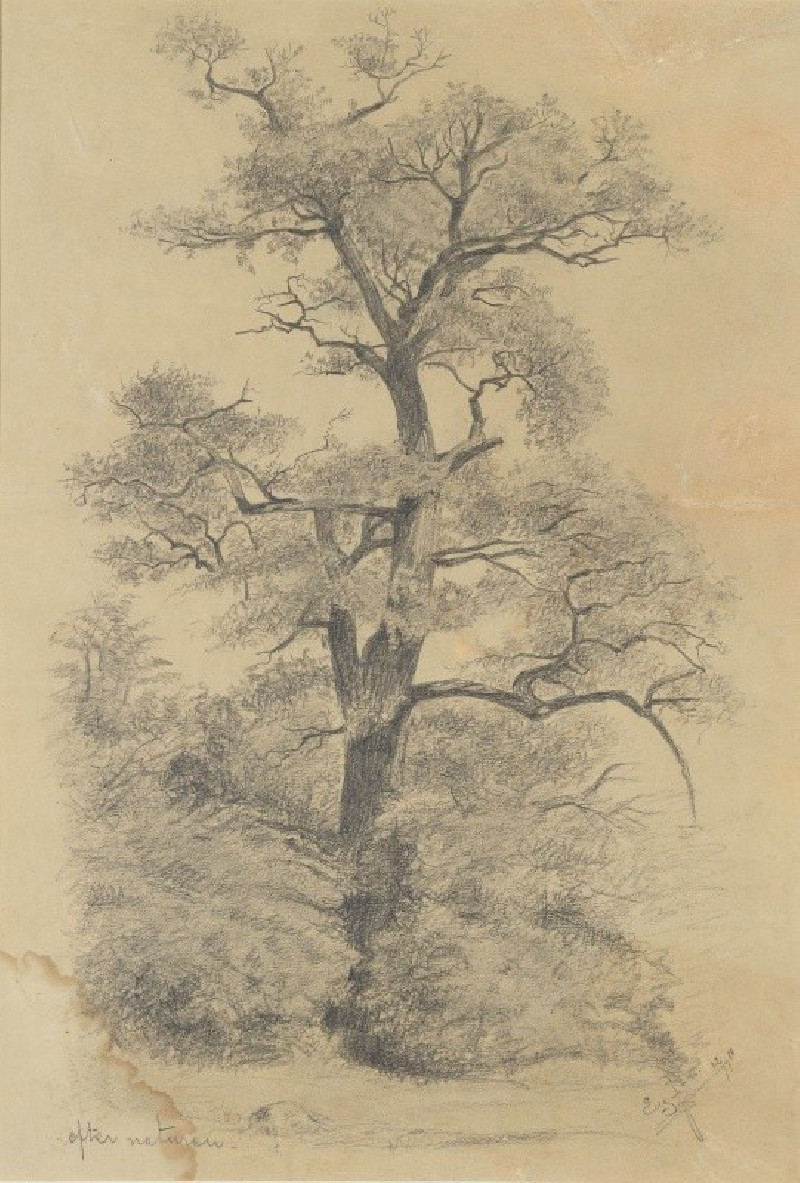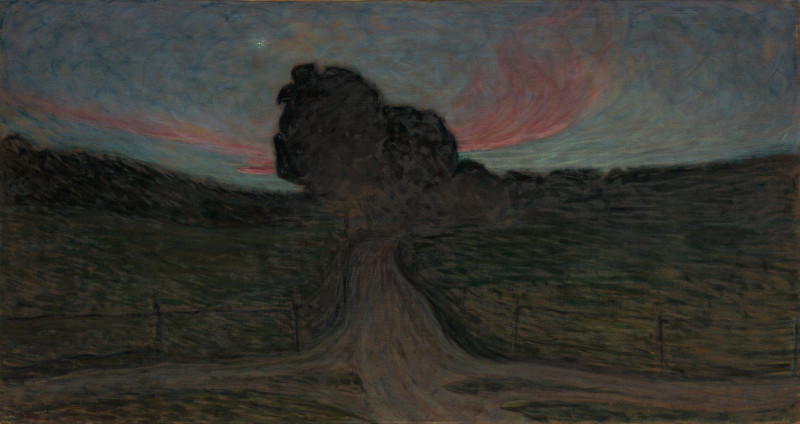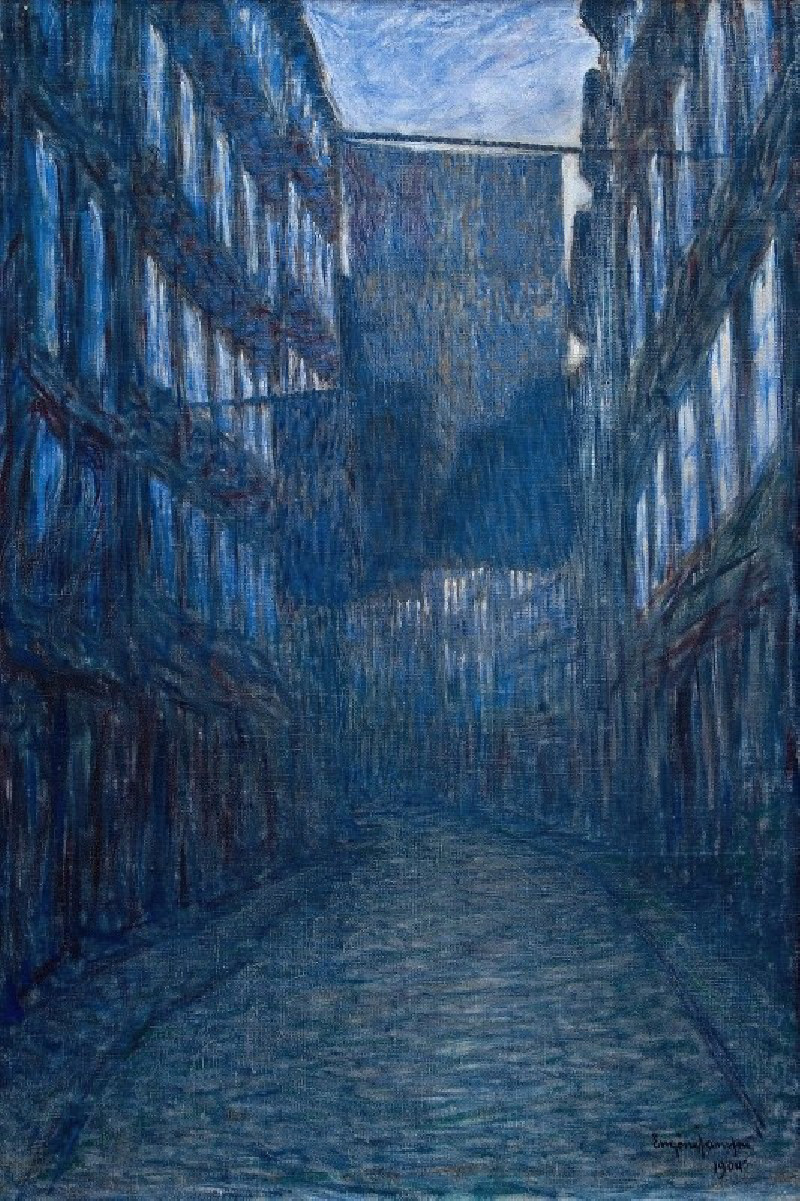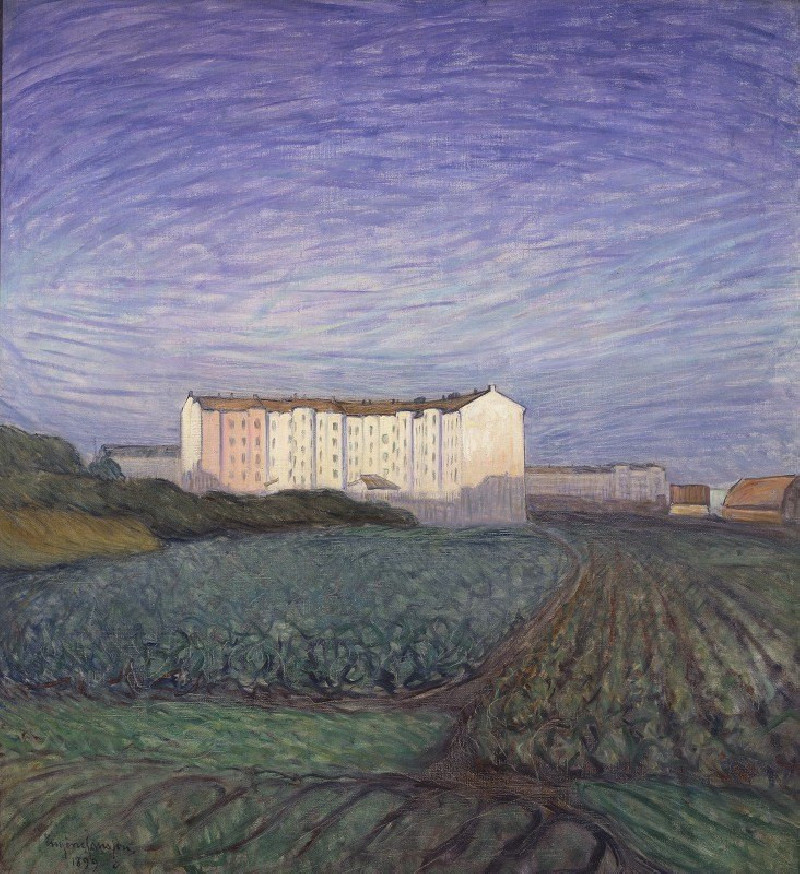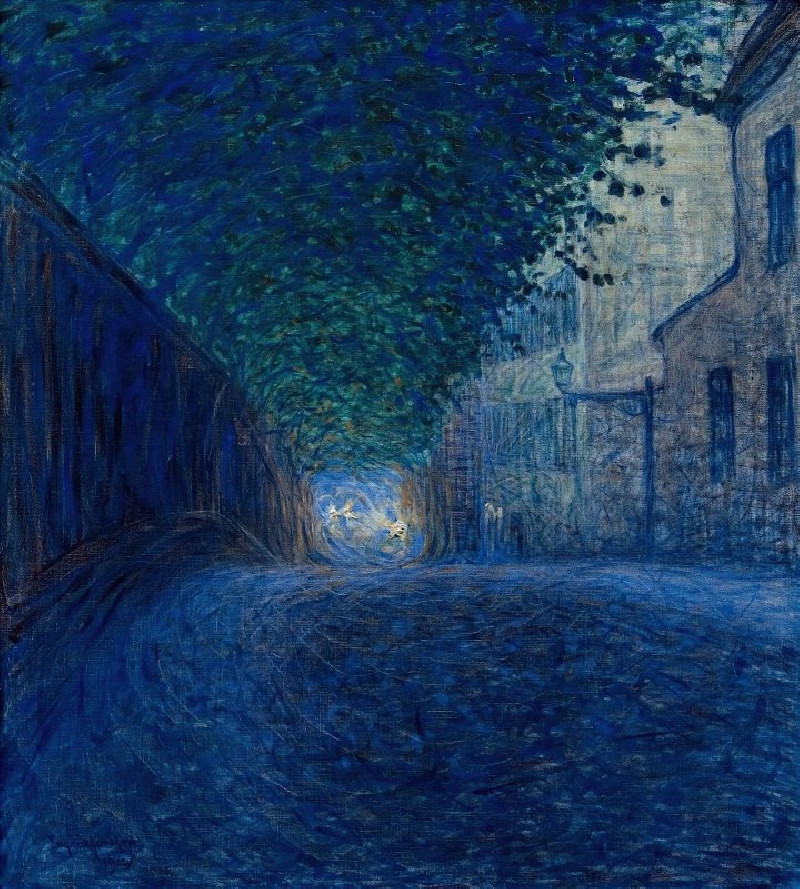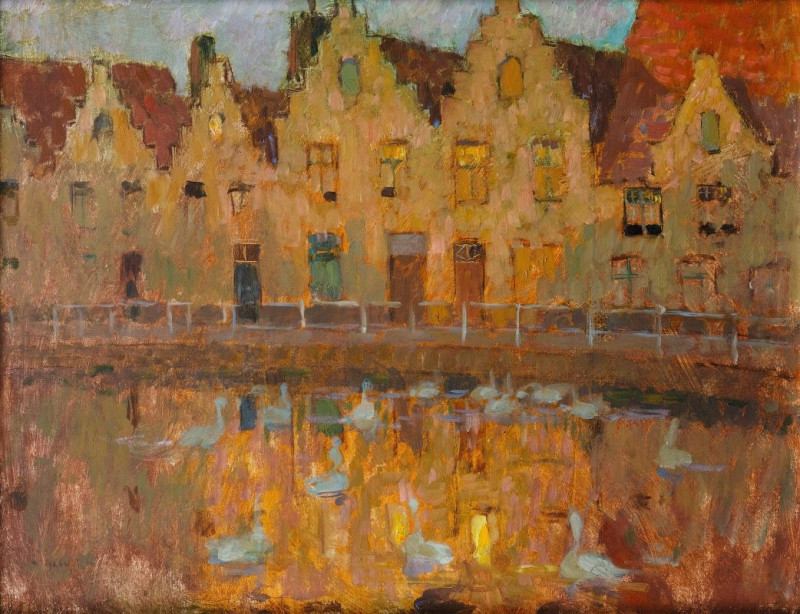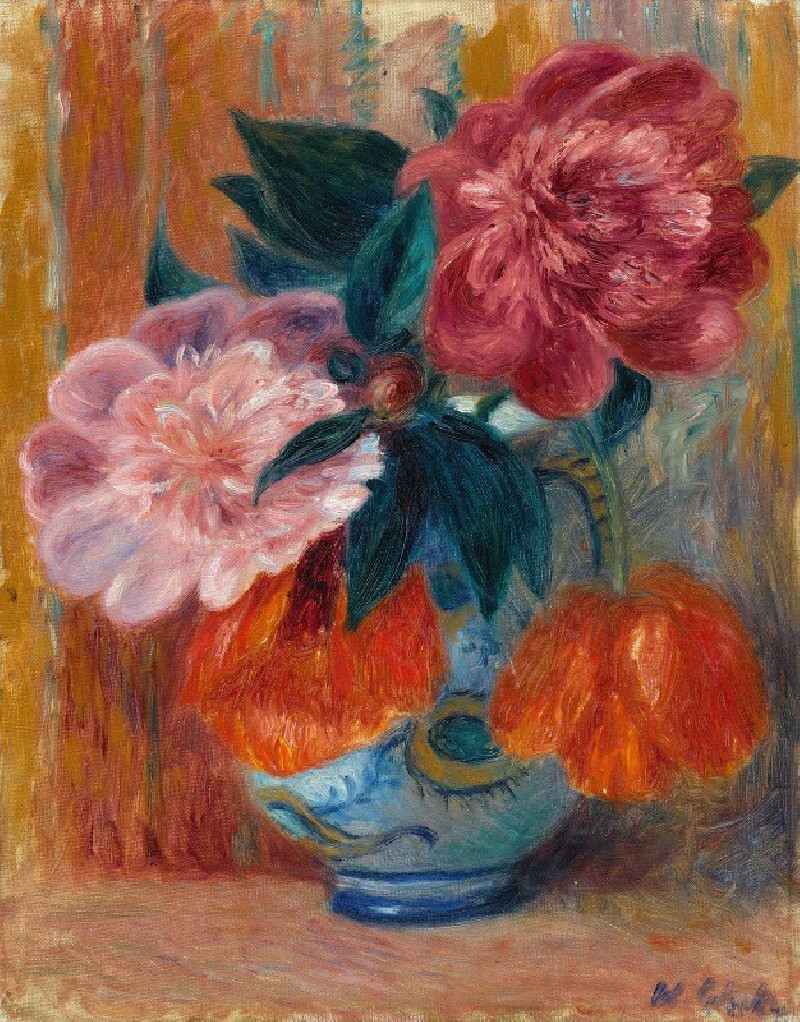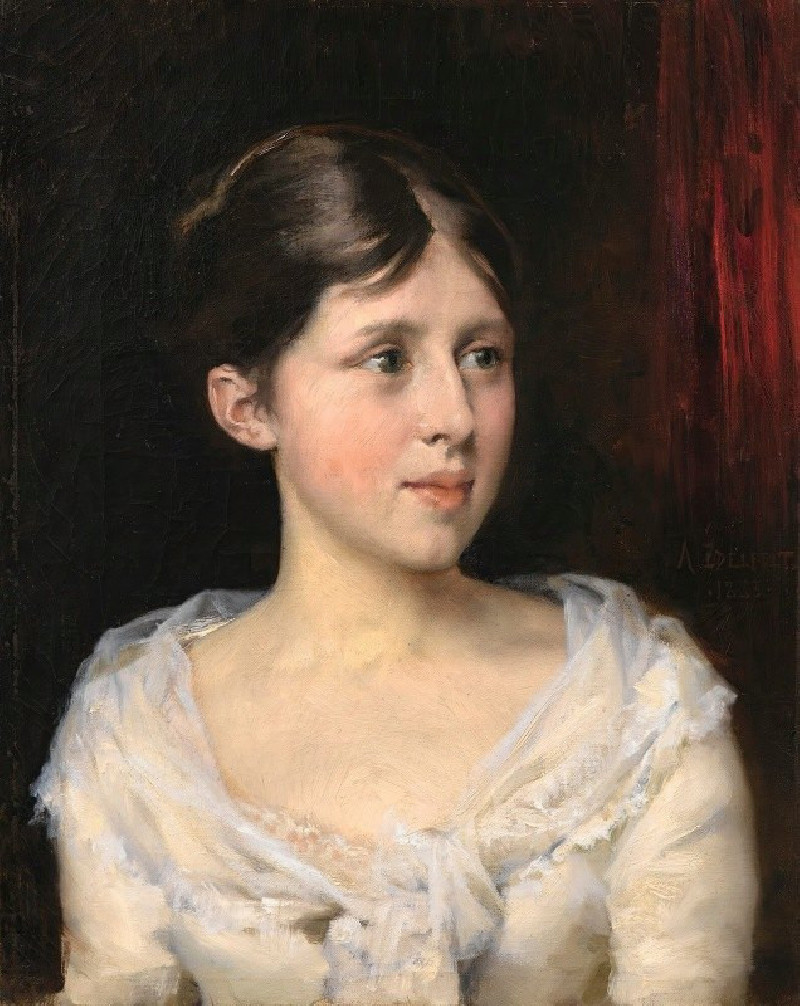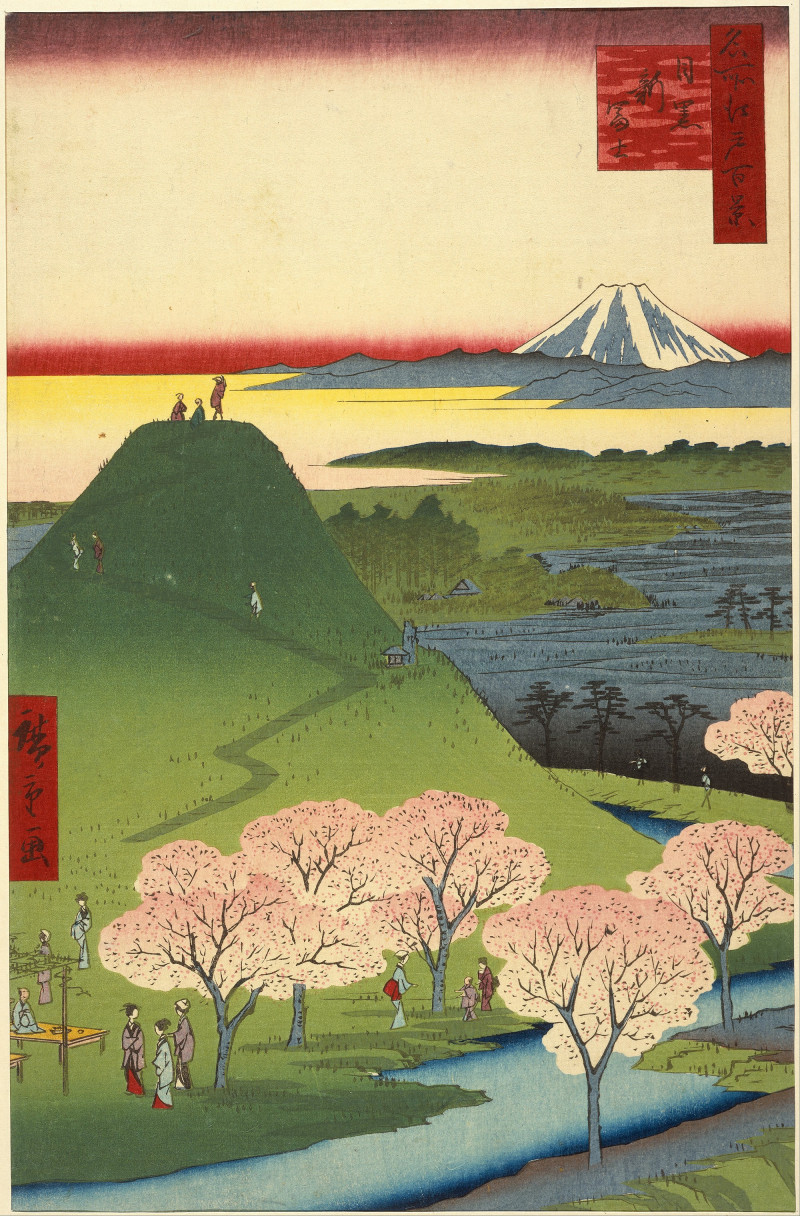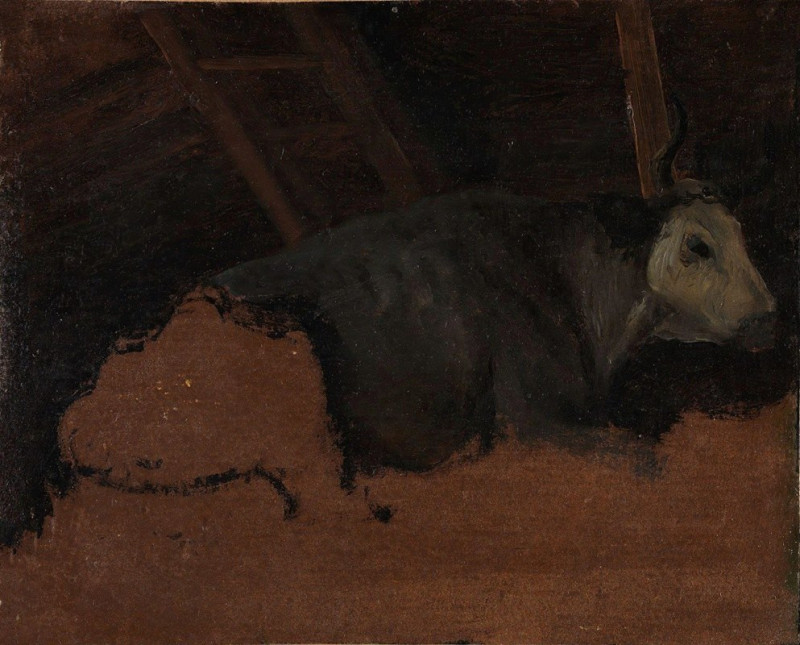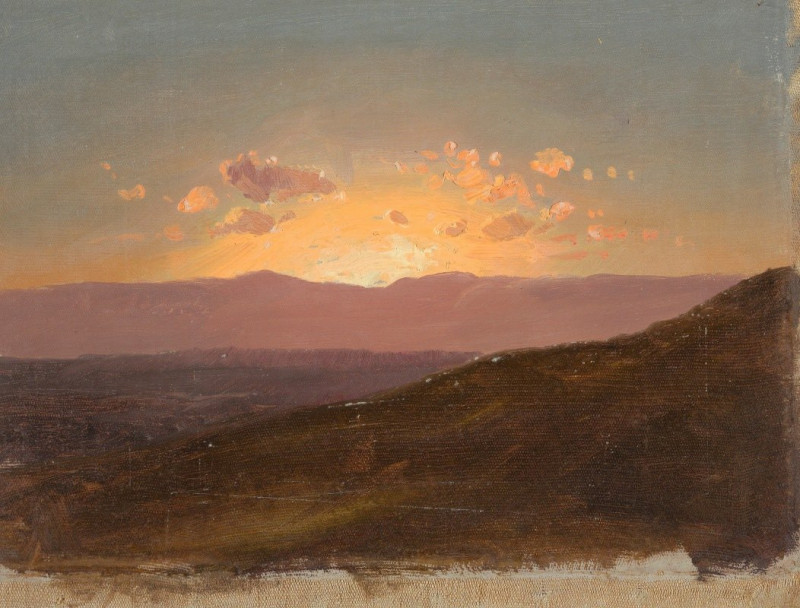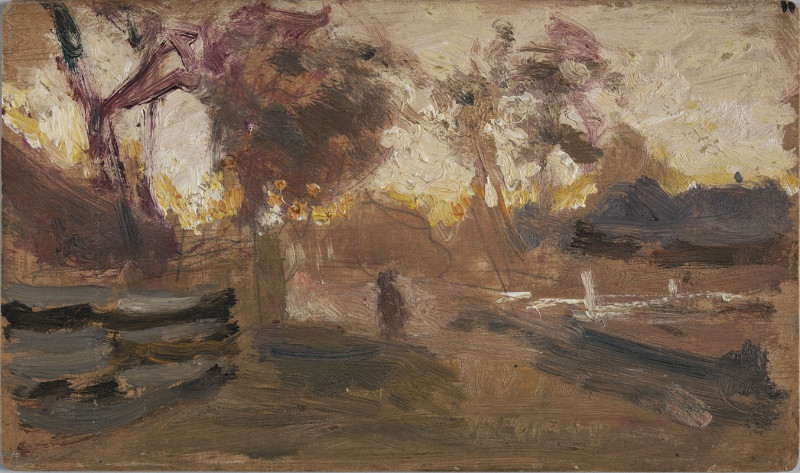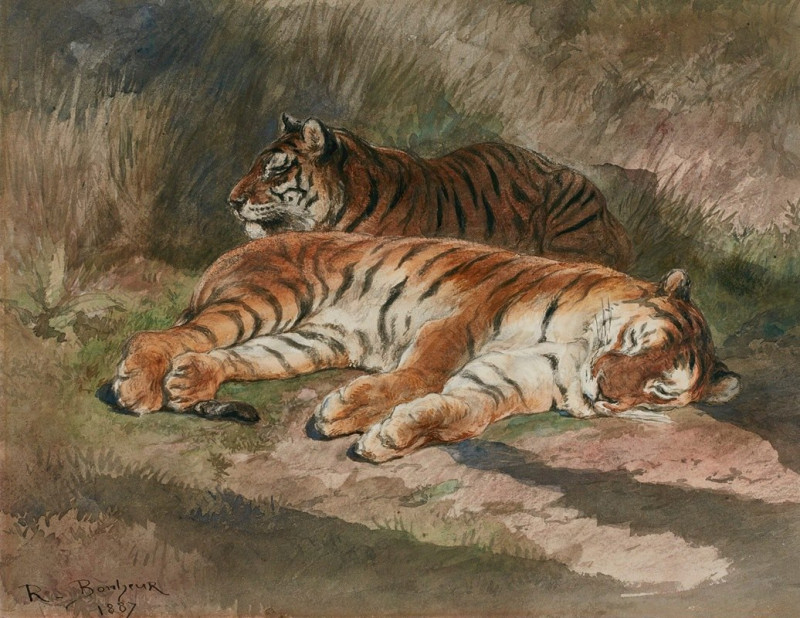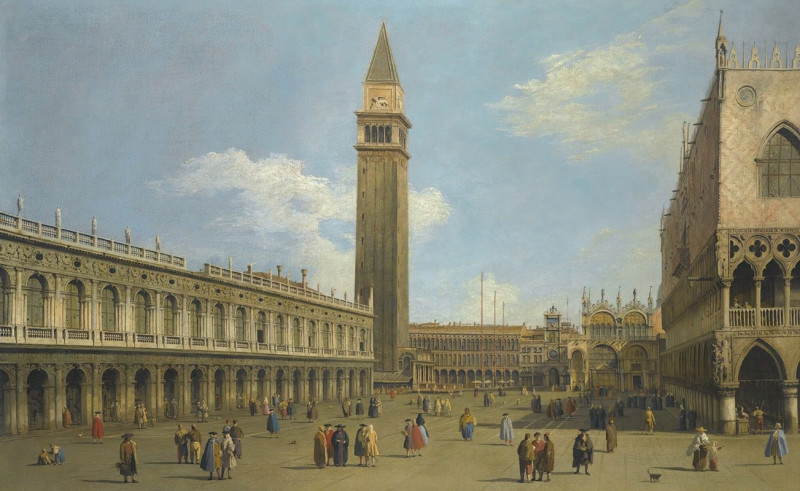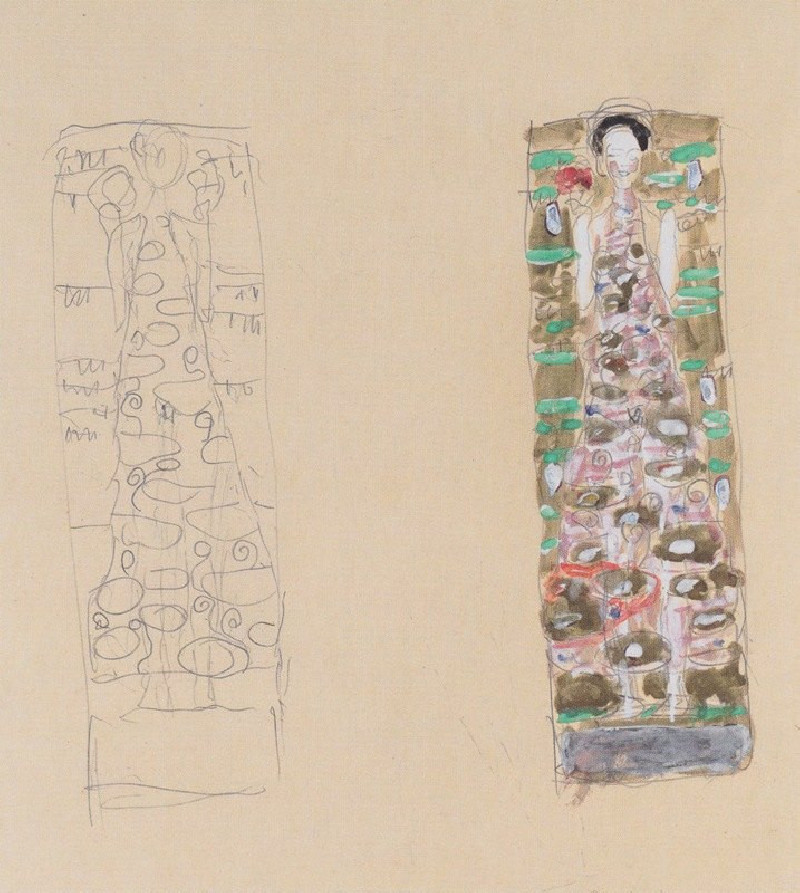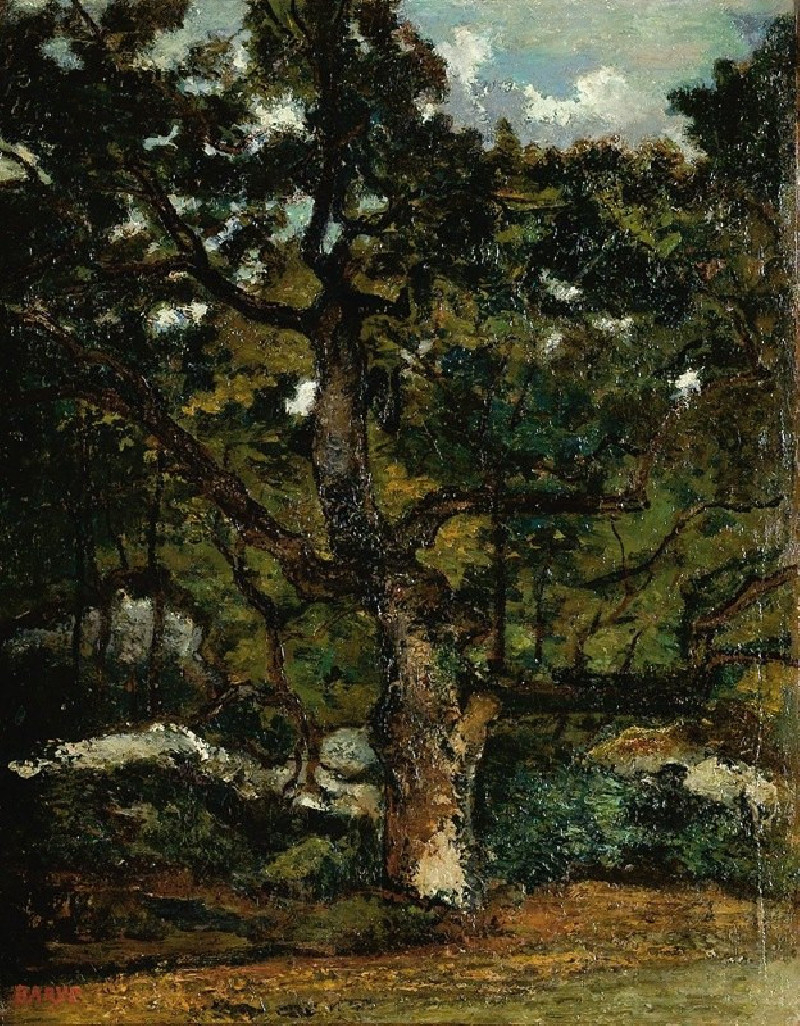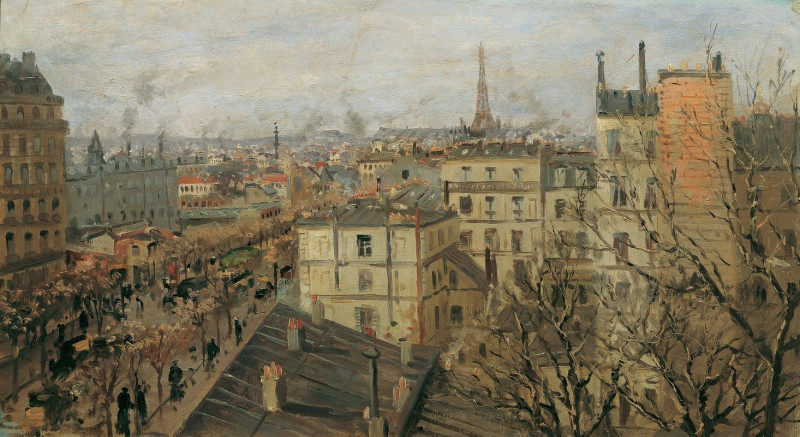Self-portrait (1901)
Technique: Giclée quality print
Recommended by our customers
More about this artwork
Explore the introspective depth of Eugène Jansson's Self-Portrait, painted in 1901. This compelling artwork stands as a testament to Jansson's unique stylistic approach, characterized by his distinctive use of blue tones and meticulous attention to atmospheric effects.In this self-portrait, Jansson captures himself against the backdrop of a nighttime landscape seen through large windows. The artist's posture is solemn and contemplative, with his face emerging from the shadows into the soft, enigmatic light that envelops him. The muted expression and fixed gaze suggest a moment of self-reflection, perhaps mirroring his feelings toward his artistic journey.The contrasting textures of the deep blues and the luminous cityscape beyond create a visually striking composition. The city lights twinkling in the distance complement the overall moodiness of the scene, while the windows frame the urban world outside, symbolizing the bridge between the personal interior space and the expansive outer world.
Delivery
Returns
Eugène Fredrik Jansson (18 March 1862, Stockholm – 15 June 1915, Skara) was a Swedish painter known for his night-time land- and cityscapes dominated by shades of blue. Towards the end of his life, from about 1904, he mainly painted male nudes. The earlier of these phases has caused him to sometimes be referred to as blåmålaren, "the blue-painter".

